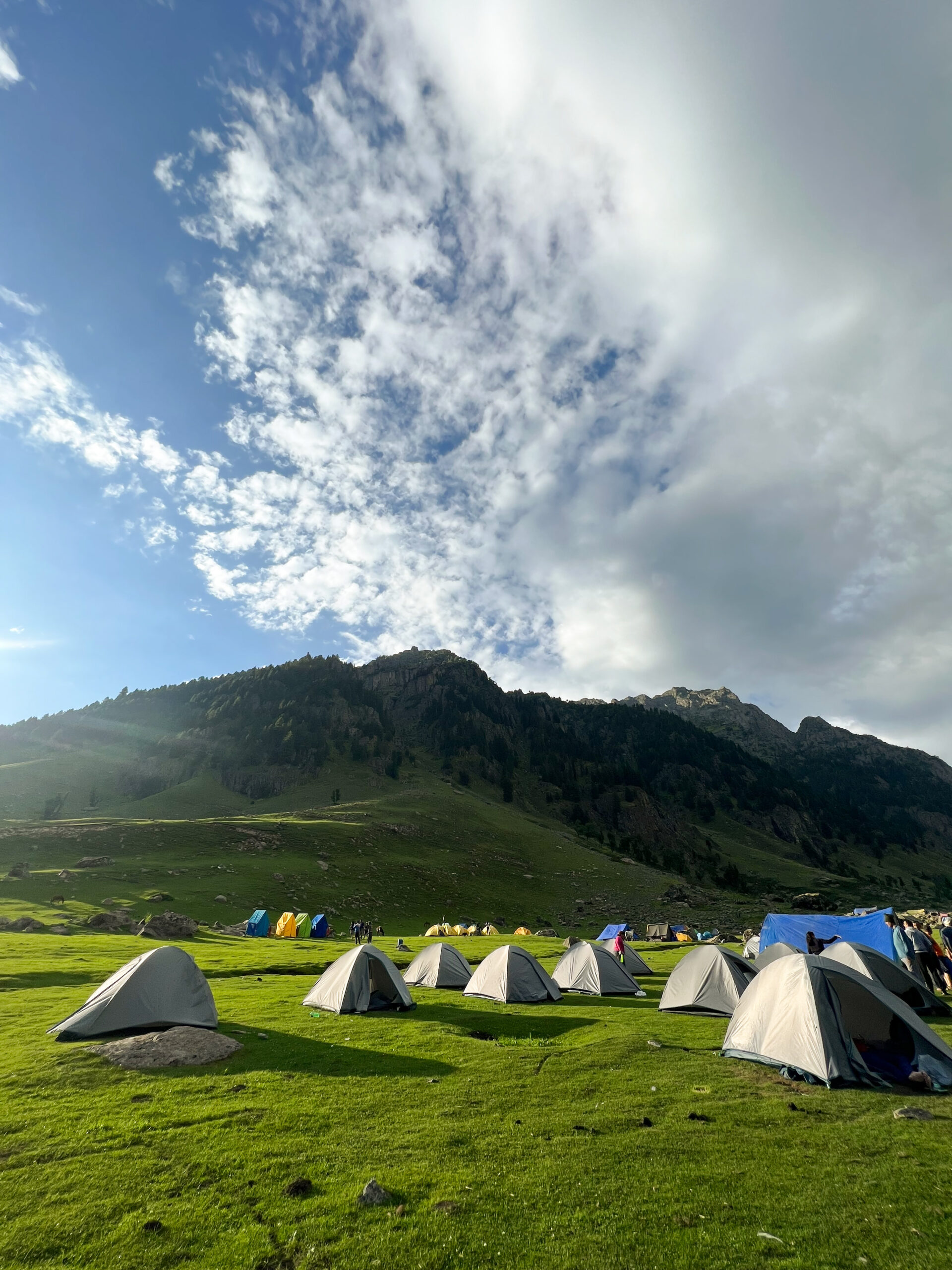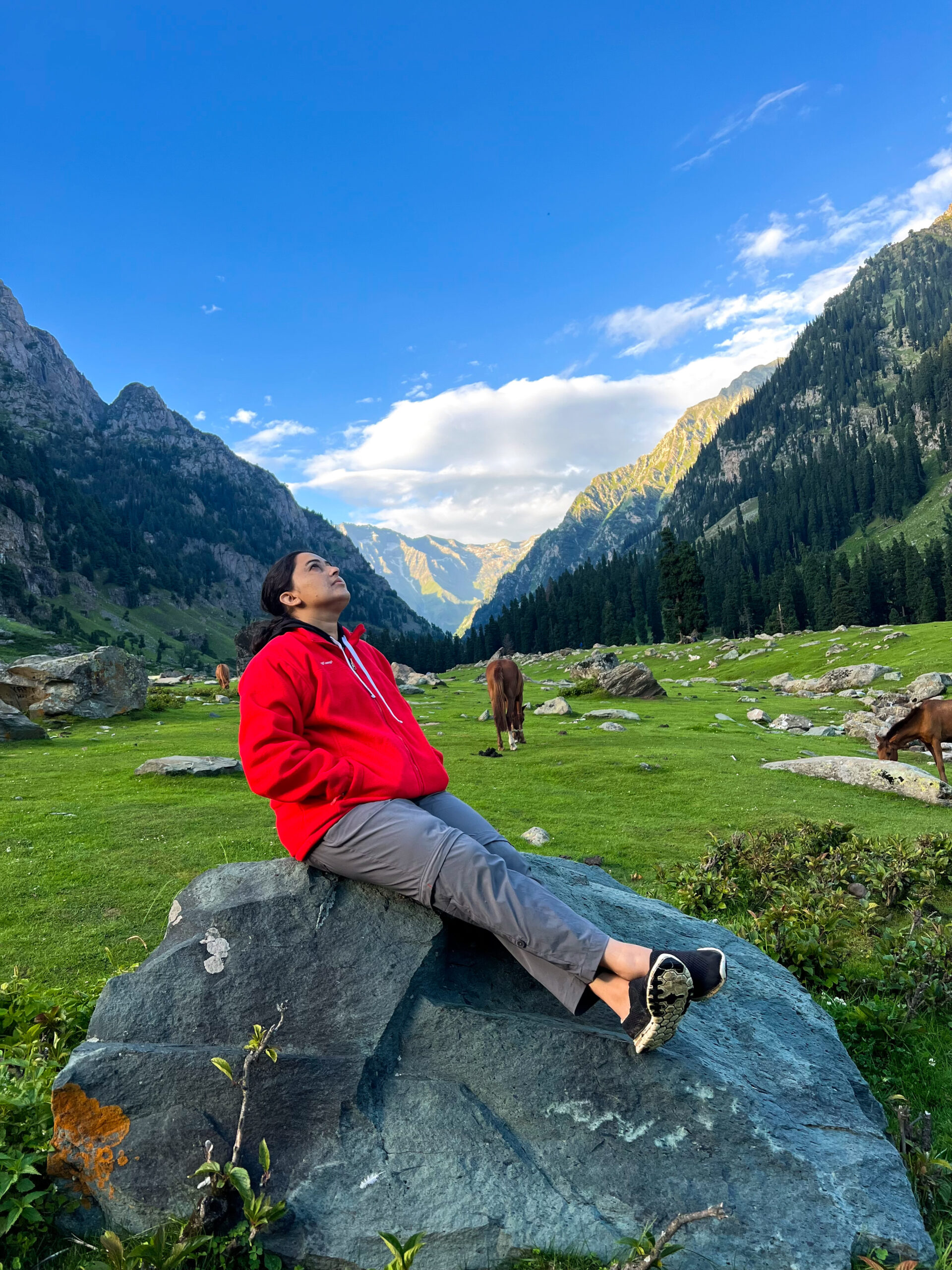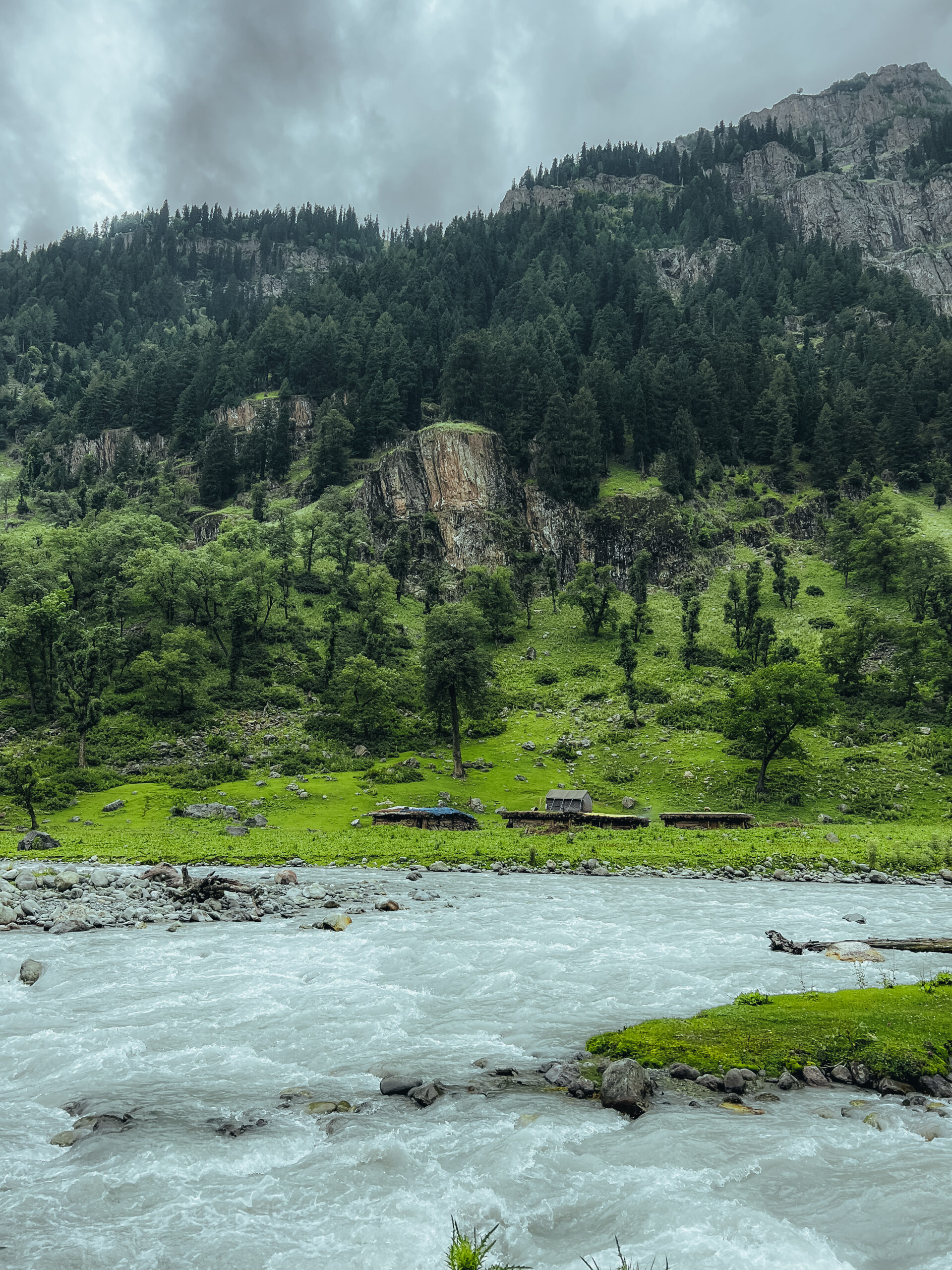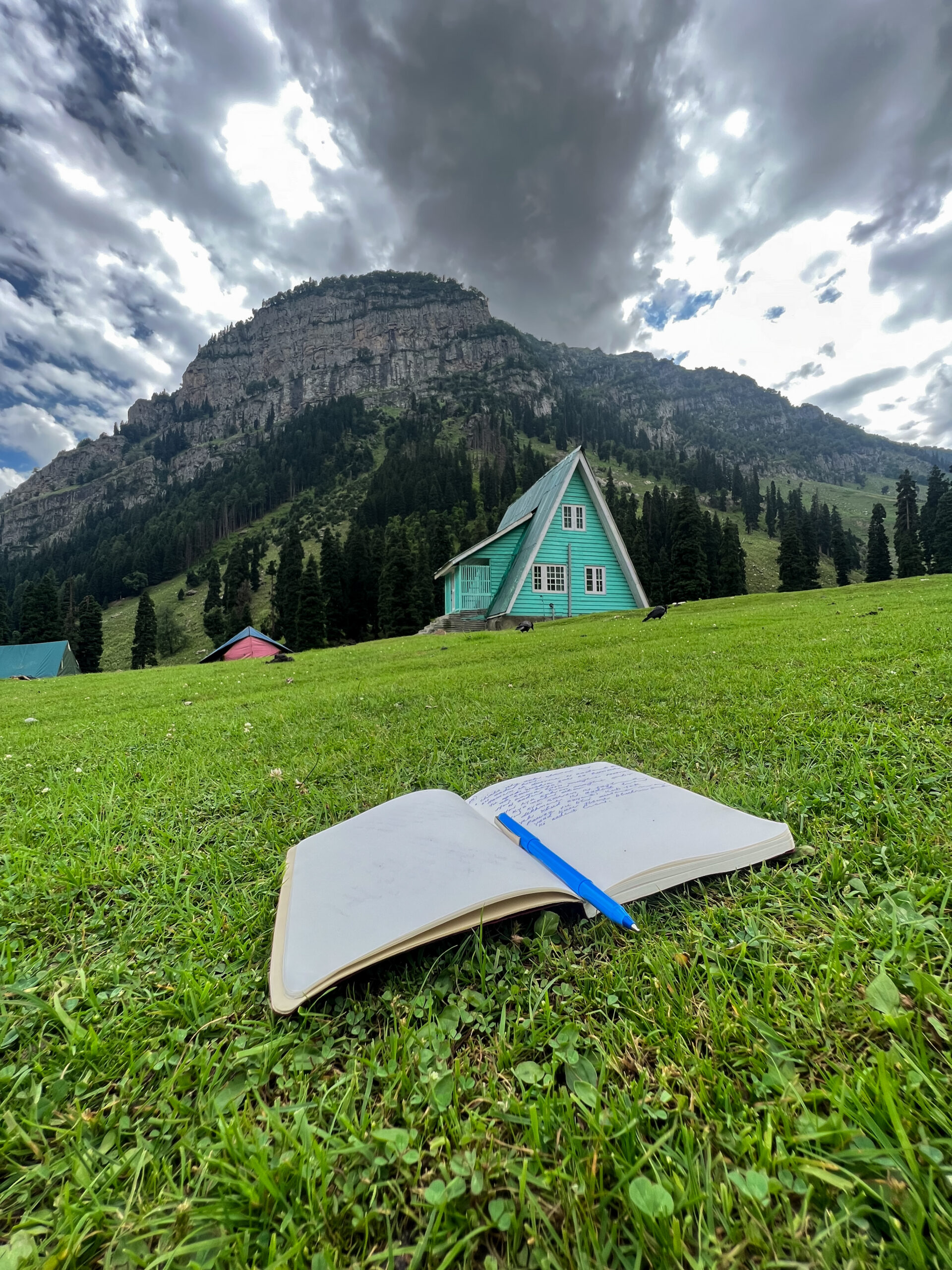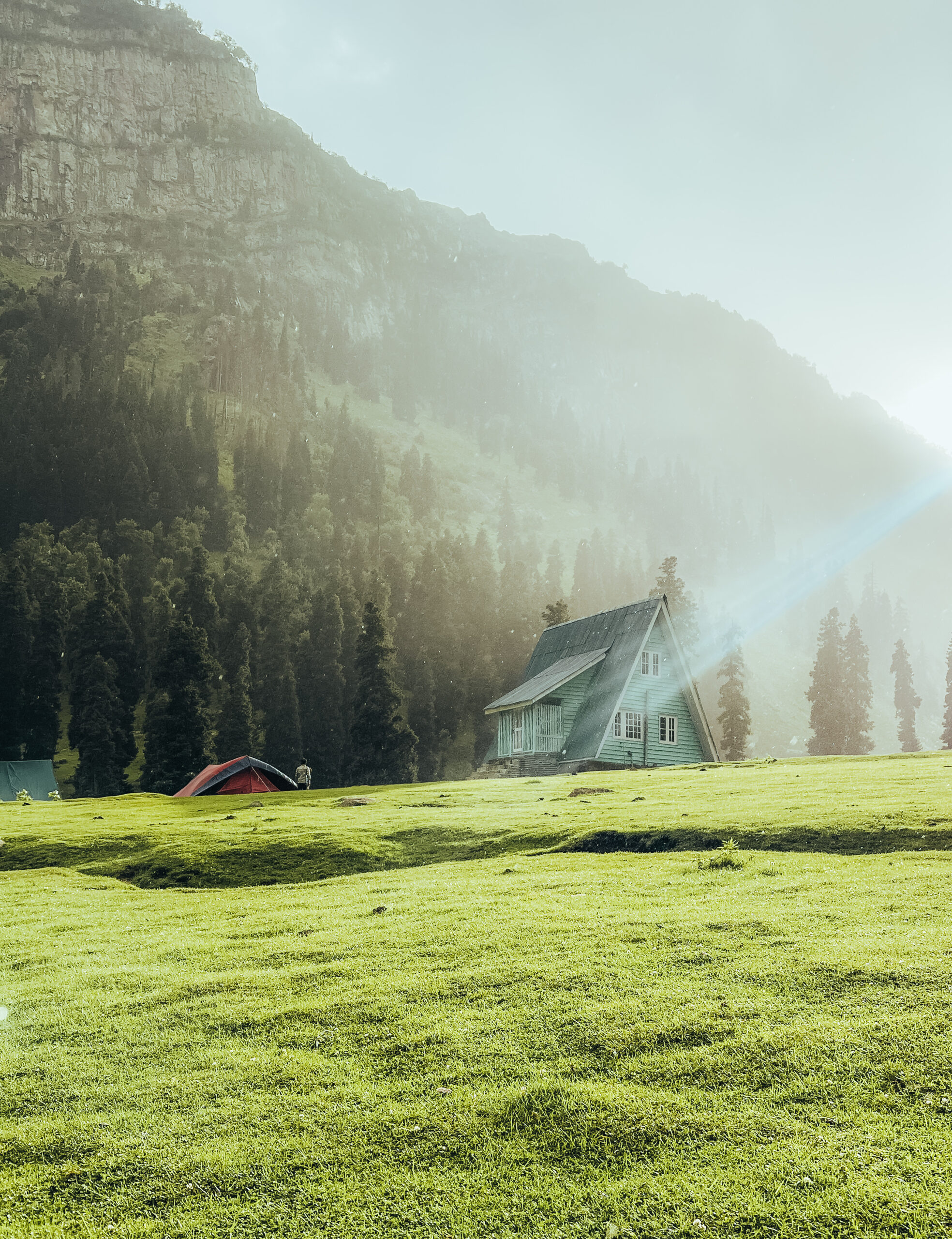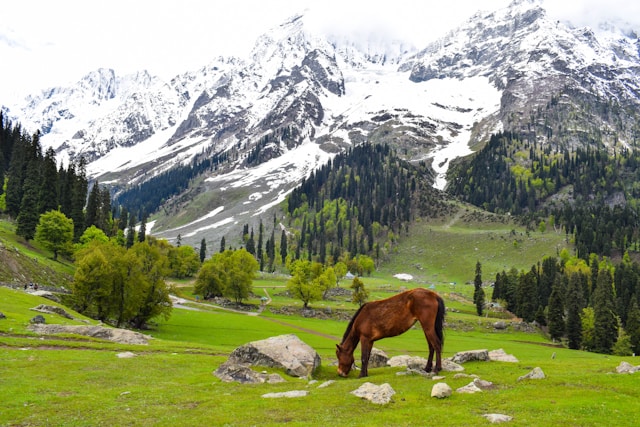

Lidderwat Trek: Experience The Offbeat Trekking in Kashmir
This post is written by a guest contributor, Nargis Farheena.
Author’s Bio: Nargis is an adventurous soul and an avid travel writer with a passion for exploring the nooks and corners of Kashmir. Not just that, but she has a whopping 220K+ followers on Instagram, where she shares her stories from the valley.
Nestled just a stone’s throw away from the quaint town of Aru in Pahalgam, Kashmir, lies a hidden paradise waiting to be discovered—Lidderwat. This enchanting meadow isn’t just a feast for the eyes; it’s a haven for beginners yearning to taste the magic of Himalayan trekking.
The Trekking Experience
Embark on a journey where the destination is merely a delightful punctuation mark to the adventure. The trail to Lidderwat unfolds like a storybook, with each step offering panoramic vistas of the surrounding landscape. Follow the gentle curves of the Lidder River and watch in awe as it weaves its way amidst towering peaks.
Enchanting Sights Along the Way
Prepare to be captivated by the rustic charm of the nomadic families who call this region home. Their traditional abodes stand as silent witnesses to a way of life steeped in history and tradition, inviting you to step back in time for a moment.
Crossing Bridges and Waterways
Feel the thrill of adventure as you traverse wooden bridges spanning crystal-clear streams. The rush of water beneath your feet constantly reminds you of nature’s untamed beauty, adding an extra dash of excitement to your journey.
Embracing Nature’s Beauty
Lose yourself in the lush embrace of Lidderwat’s greenery. Towering trees and verdant expanses surround you, creating a sanctuary of tranquillity amidst the rugged Himalayan terrain. Let the gentle breeze and melodious bird songs serenade you as you soak in the serenity of your surroundings.
Gateway to Adventure
For the intrepid souls seeking more than just a glimpse of paradise, Lidderwat offers a gateway to a world of adventure. From the legendary Tarsar, Marsar, and Durinar treks to countless undiscovered trails, the possibilities are as vast as the Himalayan sky.
[Also Read: Experiencing The Kashmir Great Lakes Trek]
Best time to go
The Lidderwat trek can be done year-round, but the best time to visit is from April to October when the weather is pleasant.
How to reach?
To reach Lidderwat, start your journey from Srinagar, passing through the popular tourist spot of Pahalgam. After a scenic 2.5-hour drive, you’ll arrive at Aru, where you can stay overnight.
The next day, set out early to begin your trek. The trail offers stunning views of mountain peaks, the gentle flow of the Lidder River, and charming nomadic homes. You’ll cross wooden bridges over rushing streams and walk through lush green meadows.
After a day of exploration, you can return to Aru, Pahalgam, or Srinagar with memories of a beautiful and enriching trek in Kashmir’s paradise.
Whether you’re a novice or a seasoned trekker, the allure of Lidderwat promises an experience that will linger in your memories long after the journey ends. So heed the call of the mountains, and let Lidderwat be your guide to a Himalayan adventure like no other.
Frequently Asked Questions About Lidderwat Trek
- How difficult is the Lidderwat Trek?
The Lidderwat Trek is considered an easy-to-moderate trek, ideal for beginners and families. The terrain is not too steep, and most of the trail involves gradual ascents through meadows and forests. - What is the total duration of the Lidderwat Trek?
The trek typically takes 2 days and 1 night if you just go to Lidderwat and back. However, trekkers often extend their stay or continue further to Kolahoi Glacier, Tarsar Marsar Lakes, or Satlanjan.
- What is the best time to do the Lidderwat Trek?
The best time is April to October. During these months, the trail is accessible, meadows are lush, and the weather is pleasant. Snow blocks the route in winter and early spring.
- Do I need a guide for the Lidderwat Trek?
While the trail is fairly straightforward, hiring a local guide or pony handler is highly recommended, especially if you’re unfamiliar with the terrain or planning to camp overnight. It also helps support local livelihoods.
